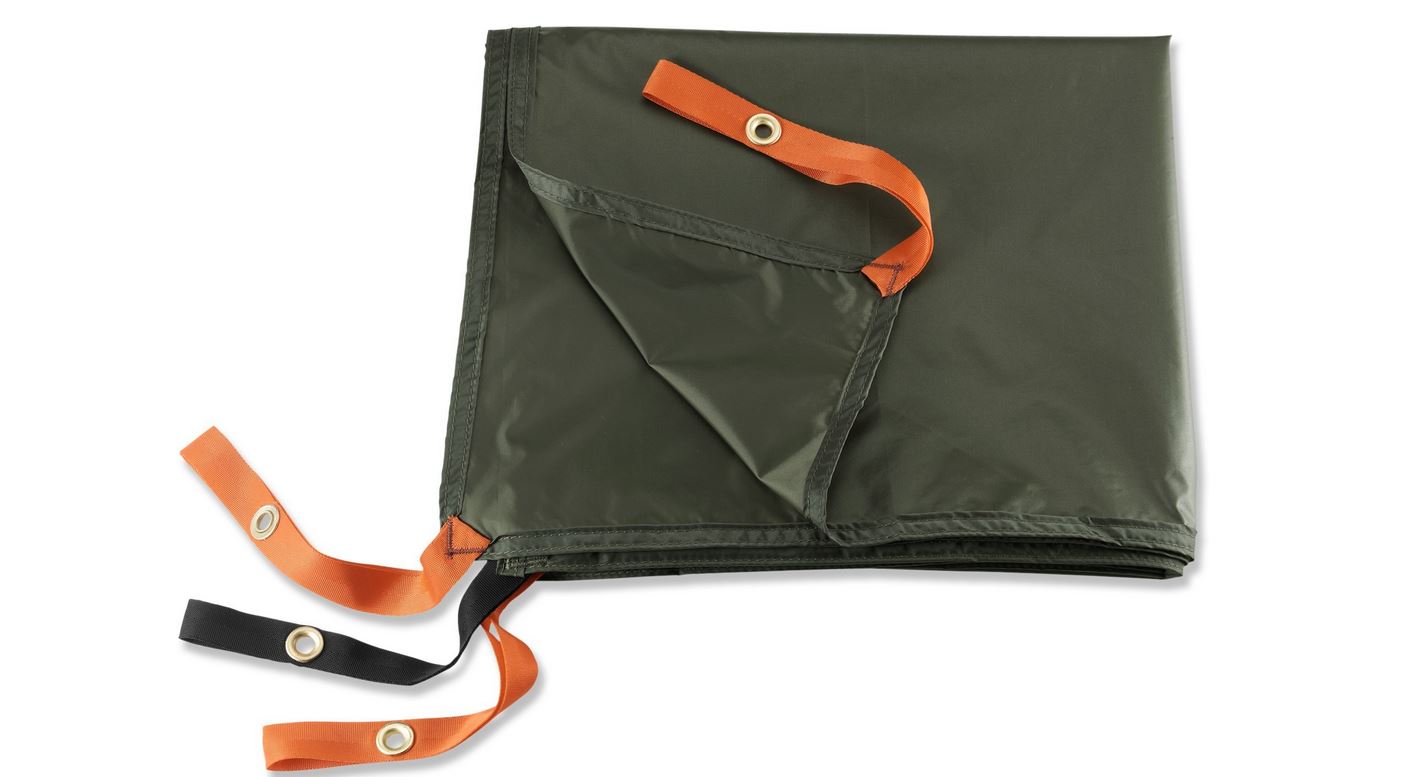

The secret to a secure footprint is how you place the grommets.
Tent footprints are cut to precisely match a tent’s floor dimensions. When placed underneath the tent, they provide protection from abrasion, moisture, and general wear-and-tear and are generally recommended when a few extra ounces aren’t a big deal. (It’s a different story when you are counting ounces, however. More on this below.)
Nearly every gear manufacturer these days offers footprints specific to their various tent models. They are almost always sold separately as a somewhat pricey accessory ($20 to $50 or so, depending on the tent).
How to firmly attach a footprint to your tent
Manufacturer footprints typically feature a series of tabs and grommets that match the locations of the grommets on the tent body where the poles are inserted.
When most people pitch the tent, they insert the pole tips first into the tent body and then into the footprint grommets underneath. The problem with this technique is this: If you pick up or shift the tent to find a better spot, or lift it overhead to shake out debris, the footprint will often fall off at one or more attachment points. This isn’t a disaster, certainly, but it is annoying and requires you to reposition and re-attach the footprint once the tent is back where you want it.
The simple trick to avoid this is this: When you are pitching your tent, place the footprint grommets above the tent body grommets so that the pole tip attaches first to the footprint and then to the tent body. Voila, the footprint is now completely and securely attached, no matter how much you shake, shift, or move the tent.
But wait, do I really need a footprint in the first place?
It depends. If you are camping on highly abrasive surfaces, it’s probably a good idea. If you are camping on ground that’s more forgiving (such as the forest floor common throughout much of the Northeast), a footprint is generally not necessary. And if you are keeping weight to a minimum, a footprint is one of the first things you should consider removing from your pack.
Also remember that you can easily create your own footprint by cutting a piece of tough, lightweight material or fabric to match your tent (Tyvek works great). It’s a lot cheaper, though you do lose the convenience of the attachment grommets.
Lastly, if you are debating whether to buy one or not, remember that your decision window is often relatively short for purchasing one specific to your tent. Manufacturers constantly change tent styles and dimensions and finding the right version for your tent a year or two later is often difficult to impossible.